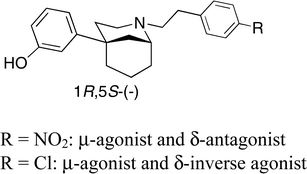*
Corresponding authors
a
Drug Design and Synthesis Section, Chemical Biology Research Branch, National Institute on Drug Abuse, National Institutes of Health, Department of Health and Human Services, Bethesda, Maryland, USA
E-mail:
kr21f@nih.gov
b
University of New England, College of Osteopathic Medicine, Biddeford, ME, USA
c
Department of Pharmacology and Toxicology, School of Medicine, Virginia Commonwealth University, Richmond, VA, USA
d
Department of Pharmaceutical Sciences, University of Maryland School of Pharmacy, Baltimore, MD, USA
e
Clinical Psychopharmacology Section, Intramural Research Program, National Institute on Drug Abuse, National Institutes of Health, Department of Health and Human Services, Baltimore, Maryland, USA


 Please wait while we load your content...
Please wait while we load your content...